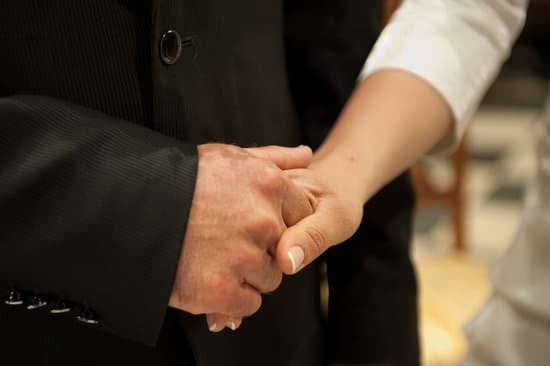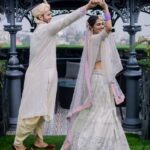What is a traditional Irish wedding? This age-old celebration is filled with rich customs, rituals, and superstitions that have been passed down for generations. From the ceremony to the attire and the reception, traditional Irish weddings are steeped in history and symbolism. In this article, we will explore the fascinating world of traditional Irish weddings, including their origins, customs, and timeless charm.
The history and origins of traditional Irish wedding customs date back centuries and are deeply rooted in Ireland’s cultural heritage. These customs have been preserved and continue to be an integral part of modern-day Irish weddings. From pre-wedding rituals to the reception festivities, each aspect of a traditional Irish wedding is filled with meaning and tradition.
In this comprehensive guide, we will delve into the various elements that make up a traditional Irish wedding, from the significance of the ceremony rituals to the superstitions surrounding pre-wedding customs. Additionally, we will explore how modern influences have shaped and evolved these ancient traditions while still maintaining their timeless charm. Join us on a journey through the enchanting world of traditional Irish weddings.
History and Origins of Traditional Irish Wedding Customs
The history and origins of traditional Irish wedding customs are deeply rooted in the rich heritage and culture of Ireland. These customs date back centuries and have been passed down through generations, making them an integral part of Irish wedding ceremonies.
Ancient Celtic Influence
Many traditional Irish wedding customs can be traced back to the ancient Celts, who inhabited Ireland thousands of years ago. The Celts placed great importance on rituals and symbolism, which is reflected in many aspects of a traditional Irish wedding. For example, the use of certain symbols such as the Claddagh ring, Celtic knot designs, and the tradition of handfasting can all be linked to ancient Celtic traditions.
Religious Influence
With Ireland being a predominantly Catholic country, many traditional Irish wedding customs also have roots in Christianity. The influence of the Catholic Church has shaped certain aspects of the ceremony, such as the recitation of vows, blessings from priests or religious figures, and the significance of specific prayers and readings during the service.
Incorporation of Folklore
Traditional Irish wedding customs often incorporate elements of folklore and superstition. For example, there is a belief that getting married on certain dates such as St. Patrick’s Day or during a full moon will bring good luck to the couple. Additionally, customs such as placing a sprig of shamrock in the bride’s bouquet or wearing a blue dress are tied to old superstitions and folklore beliefs that have been passed down over time.
Understanding the history and origins of these traditional Irish wedding customs provides insight into their enduring significance in modern ceremonies. From ancient Celtic influences to religious traditions and folkloric beliefs, these customs contribute to the timeless charm of a traditional Irish wedding.
The Ceremony
Handfasting
One of the oldest customs in an Irish wedding ceremony is the practice of handfasting. This ancient Celtic tradition involves binding the couple’s hands together with a ribbon or cord, symbolizing their commitment to each other. This ritual has its roots in pagan ceremonies and represents the unity and bond between the couple.
The Claddagh Ring
Another cherished tradition during an Irish wedding ceremony is the exchange of Claddagh rings. These traditional Irish rings feature a distinctive design of two hands holding a heart, topped with a crown. The way in which the ring is worn carries significant meaning: on the right hand with the heart facing outward signifies that one is single, while on the left hand with the heart facing inward denotes marriage.
Unity Candle Ceremony
In addition to these long-standing rituals, many couples choose to incorporate a modern touch by including a unity candle ceremony in their wedding. This symbolic act involves lighting two individual candles before using them to ignite a larger candle, representing the union of two individuals into one shared life. While not originally part of traditional Irish weddings, this practice has become increasingly popular and allows couples to personalize their ceremony while still honoring their heritage.
These traditions and rituals are just a few examples of what makes a traditional Irish wedding such an extraordinary event, rich in history and symbolism. Each custom adds depth and meaning to the ceremony, creating an unforgettable experience for both the couple and their guests.
Traditional Irish Wedding Attire
When it comes to traditional Irish wedding attire, the bride usually wears a white dress and veil which is similar to the western customs. However, in some parts of Ireland, brides choose to wear a blue dress instead of white. This originates from the old tradition where blue was considered the color of purity. The groom typically wears a kilt or a traditional Irish Aran sweater with tweed trousers.
It is also customary for both the bride and groom to incorporate specific symbols into their attire. The bride often wears a Claddagh ring, which represents love, loyalty, and friendship. In addition, she may carry a sprig of shamrock in her bouquet to honor her Irish heritage. The groom may also wear a shamrock in his buttonhole or his jacket pocket as a symbol of good luck.
For those interested in learning about traditional Irish wedding attire for guests, women often opt for dresses featuring Celtic designs or accessories such as emerald jewelry and shawls. Men are typically encouraged to wear kilts if they have Scottish heritage or can opt for tweed suits with ties featuring Celtic patterns.
| Attire | Symbolism |
|---|---|
| Bride’s Dress | White (or Blue), Claddagh ring, sprig of shamrock |
| Groom’s Attire | Kilt or Aran sweater with tweed trousers, shamrock |
| Guests’ Attire | Celtic designs for women, kilts for men (if Scottish heritage), tweed suits with Celtic pattern ties |
Pre-Wedding Customs and Superstitions
In Ireland, a traditional wedding involves a series of fascinating pre-wedding customs and superstitions that have been passed down through generations. These customs and superstitions add an extra layer of meaning and excitement to the wedding festivities, making the occasion even more special for the couple and their families. Here are some of the most interesting pre-wedding customs and superstitions that are commonly practiced in traditional Irish weddings:
- Engagement Ring Customs: In a traditional Irish wedding, the engagement ring is worn on the left hand with the point facing inward until the wedding day. The ring is then turned around to face outward during the ceremony, symbolizing that the wearer is now married.
- Claddagh Ring Tradition: The Claddagh ring, a traditional Irish ring featuring two hands holding a heart topped by a crown, is often used as both an engagement ring and a wedding ring. It holds great significance as it represents love (the heart), friendship (the hands), and loyalty (the crown).
- Superstitions: There are numerous superstitions associated with weddings in Ireland, such as seeing a red-haired woman or a priest on the way to the ceremony being considered good luck. It is also believed that finding a spider in your wedding dress brings good fortune.
Overall, these pre-wedding customs and superstitions add an element of fun and tradition to traditional Irish weddings, making them even more memorable and meaningful for everyone involved. These age-old practices continue to be cherished by couples who want to honor their heritage and celebrate their love in true Irish style.
The Reception
The traditional Irish wedding reception is a lively and joyous affair filled with delicious food, plentiful drink, and entertaining activities. One of the most well-known aspects of an Irish wedding reception is the abundance of hearty, satisfying food. Traditional dishes such as Irish stew, colcannon, and soda bread are often served to guests, while more modern receptions may feature a full sit-down meal or buffet with a wider variety of options.
In addition to the delicious cuisine, Irish weddings are famous for their spirited celebration of music and dance. Live music is often featured at receptions, with popular instruments including the fiddle, bodhrán, and tin whistle. Traditional Irish dances such as the ceili and set dances are also commonly performed, inviting guests to join in the celebratory fun.
When it comes to drinks, a traditional Irish wedding typically offers a variety of options to ensure all guests have something to enjoy. In addition to beer and wine, it’s common for whiskey and poteen (a high-proof spirit made from potatoes or grain) to be served. A popular tradition at many Irish weddings is the “wine toast” where the couple shares a specially chosen bottle with their loved ones.
| Aspect | Details |
|---|---|
| Food | Irish stew, colcannon, soda bread |
| Music & Dance | Fiddle, bodhrán, tin whistle; ceili and set dances |
| Drinks | Beer, wine, whiskey; “wine toast” tradition |
Irish Wedding Music and Dance
Ireland is known for its rich cultural traditions, and a traditional Irish wedding is no exception. Music and dance play a significant role in celebrating the union of two individuals in Ireland. From lively jigs to heartfelt ballads, Irish wedding music and dance add a unique charm to the festivities.
Irish weddings are often accompanied by the uplifting sounds of traditional Irish music. Live bands or musicians playing instruments such as the fiddle, bodhrán, and uilleann pipes create a joyful atmosphere that gets everyone on their feet. Popular tunes like “The Black Velvet Band” and “Whiskey in the Jar” are commonly heard at Irish weddings, providing an opportunity for guests to join in singing along or participating in traditional dances.
In addition to music, traditional Irish dancing is also a cherished part of wedding celebrations. The intricate steps and fast-paced movements of dances like the jig and reel bring energy to the event. Many couples even opt to include a display of Irish step dancing as part of their wedding entertainment. Whether it’s a professional performance or guests showing off their own skills, Irish dance adds an unforgettable touch to the festivities.
The combination of lively music and spirited dance creates an atmosphere of joy and celebration at traditional Irish weddings. These age-old customs not only honor Ireland’s cultural heritage but also provide an opportunity for everyone to come together in merriment.
Modern Influences on Traditional Irish Weddings
Over the years, traditional Irish weddings have evolved to incorporate modern influences while still holding on to their timeless charm. From changes in decor and attire to updates in music and entertainment, modern influences have become an integral part of these cherished celebrations.
One of the most noticeable modern influences on traditional Irish weddings is the incorporation of technology. Many couples now choose to have a professional photographer and videographer to capture every special moment of their big day. In addition, social media has become a central feature, with guests encouraged to share photos and videos using a unique wedding hashtag.
Another significant change in modern Irish weddings is the shift towards more personalized and unique ceremonies. While the traditional church wedding remains popular, many couples are opting for outdoor or alternative venues to exchange their vows. This reflects a shift towards celebrating individuality and creating a truly personal experience for both the couple and their guests.
Furthermore, modern influences can be seen in the food, drink, and entertainment at traditional Irish weddings. While the classic Irish menu of soda bread, seafood chowder, and roasted meats is still prevalent, there’s been an increase in couples incorporating international cuisine or dietary preferences into their wedding menus. In terms of entertainment, live bands or DJs have become a customary feature at wedding receptions, providing a diverse mix of musical genres to cater to all tastes.
Overall, modern influences on traditional Irish weddings serve as a reminder that while these celebrations honor age-old customs and rituals, they also adapt to reflect the changing times and values of contemporary society. Couples continue to find ways to infuse their personalities into their wedding day while still paying homage to the rich heritage of what is a traditional Irish wedding.
Conclusion
In conclusion, a traditional Irish wedding is a beautiful and timeless celebration of love and commitment, deeply rooted in history and steeped in meaningful customs. The rich history and origins of these wedding traditions reveal a deep connection to Ireland’s past, making it a truly unique and special experience for the couple and their guests.
From the ancient rituals performed during the ceremony to the elaborate superstitions and pre-wedding customs, every aspect of a traditional Irish wedding is filled with significance and symbolism.
The attire worn by the bride, groom, and bridal party also reflects the cultural heritage of Ireland, with intricate details and symbolism woven into each garment. The reception that follows the ceremony is a lively affair, featuring delicious food, flowing drinks, and lively entertainment that keeps guests dancing well into the night.
The music and dance at an Irish wedding are particularly captivating, with traditional tunes filling the air as everyone joins in on the spirited dancing that is so characteristic of these joyful celebrations.
Even as modern influences begin to subtly shape traditional Irish weddings, their timeless charm remains intact. As couples incorporate contemporary elements into their ceremonies and receptions, they continue to honor the centuries-old customs that make these weddings so special. Despite changes over time, a traditional Irish wedding continues to be a cherished embodiment of love, heritage, and community – making it an unforgettable experience for all who partake in its magic.
Frequently Asked Questions
What Is a Typical Irish Wedding?
A typical Irish wedding is often characterized by a strong sense of tradition and family. It usually includes elements such as a church ceremony, lively music and dance at the reception, and a focus on hospitality and good food.
Other common features may include the ringing of the Claddagh bells, traditional Irish blessings and toasts, and the incorporation of Celtic symbols into the decor and attire.
What to Expect at a Wedding in Ireland?
When attending a wedding in Ireland, one can expect warm hospitality, lively music and dancing, and delicious food and drink. There is often a strong emphasis on celebrating with family and friends, so guests can expect to be treated like part of the extended family.
Traditional customs such as handfasting or unity candle ceremonies may also be included in the proceedings. Overall, it’s a joyful occasion filled with love, laughter, and plenty of merriment.
What Is an Irish Marriage?
An Irish marriage is more than just a legal union – it’s often seen as a lifelong commitment rooted in faith, love, and tradition. Many couples choose to incorporate elements from their heritage into their marriage ceremony, such as wearing Claddagh rings or incorporating Celtic motifs into their vows or decorations.
In addition to legal requirements, an Irish marriage is seen as a spiritual bond that brings two families together in celebration.

I have been involved in marriages for over 20 years helping couples and singles understand more about them.





